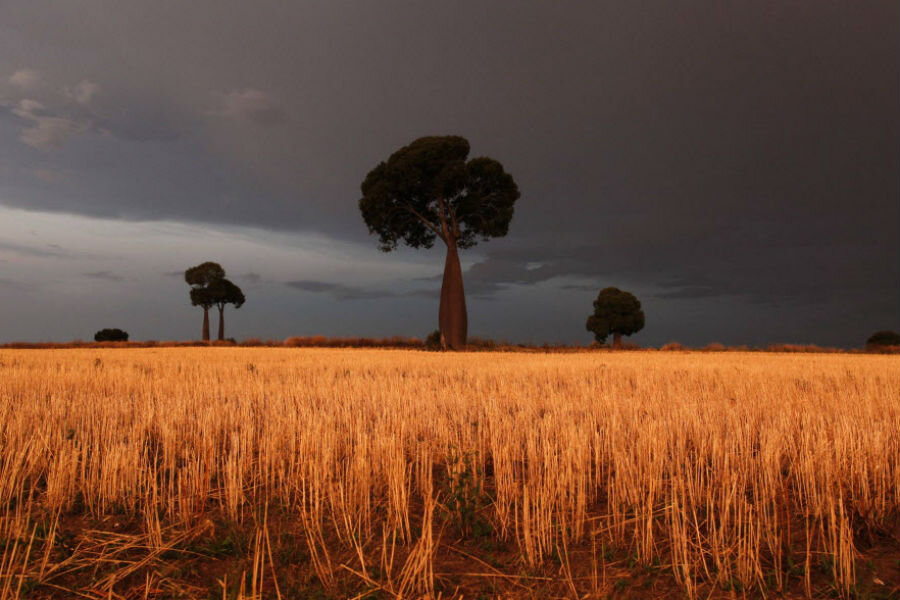What drove the extinction of really big Australian animals?
Before humans arrived in Australia, the continent was a very different place, full of dense forests and massive animals that roamed across the landmass.
These megafauna died out about 45,000 years ago, and the cause has long been the subject of significant debate among scientists. But a new study indicates that human activity, rather than climate fluctuations, might have been responsible for their gradual extinction.
When humans first arrived in Australia, it is highly possible that they hunted the large creatures for food, at least occasionally. And according to the new study, even relatively limited hunting may have been enough to drive most of Australia's largest species into extinction within only a few thousand years.
According to the study, published in the journal Nature Communications, most of the world's largest animals outside of Africa went extinct over the past 130,000 years, due to fluctuations in climate, human hunting, and shifting habitats. One of the most dramatic and relatively quick extinctions in that period happened in Australia, when 85 percent of large mammal species weighing more than 44 kg (about 97 pounds) began to disappear less than 50,000 years ago.
"Whether humans were responsible for the demise of the Pleistocene megafauna across Australia has been debated for many years," lead author palaeoecologist Dr. Sander van der Kaars from the Monash School of Earth, Atmosphere and Environment said in a Monash University statement. "Our study found that the demise of the megafauna in southwest Australia took place from 45,000 to 43,100 years ago and was not linked to major changes in climate, vegetation or biomass burning but is consistent with extinction being driven by 'imperceptible overkill' by humans."
How imperceptible? According to the study, it would have only taken the killing of one juvenile animal per person per decade to completely wipe out the megafauna once humans took hold in the region.
The subject of the megafauna collapse in Australia is still controversial, with many pointing to Australia's general shift to a more arid, desert-like climate 70,000 years ago as partially responsible for the animals' demise. But there is evidence to indicate that early humans would seek out at least some animals as a food source: a study published last year indicated that humans cooked the eggs of a giant bird, Genyornis newtoni. As the Christian Science Monitor's Christina Beck previously reported:
In order to rule out wildfire as the reason for the burned shells, scientists studied the amino acid decomposition of the eggshells. Instead of being uniformly burned all over, as eggs caught in wildfire would be, the amino acids in the shells exhibited a gradient of decomposition. They were more burnt on one end than the other, indicating cooking fires rather than wild fires.
The burnt eggshell fragments were also found in tight clusters, and exhibited signs of being cooked in fires up to 1,000 Fahrenheit, far hotter than a natural bush fire.
Before humans arrived on the scene, Australia was home to kangaroos weighing more than 1,000 pounds, 25-foot long lizards, 2,000-pound wombats, and many more huge creatures. The team of researchers confirmed their ubiquity on the continent thousands of years ago by measuring the presence of fungal spores that would have feasted on the dung of the large animals in an ancient sediment core, finding that the spores used to be abundant in the region before rapidly collapsing in conjunction with the megafauna population.
"The abundance of these spores is good evidence for a lot of large mammals on the southwestern Australian landscape up until about 45,000 years ago," Gifford Miller, a researcher in the study said in a Colorado University Boulder statement. "Then, in a window of time lasting just a few thousand years, the megafauna population collapsed."
Determining the precise reasons why the ancient creatures disappeared so quickly would represent an important addition to our understanding of human prehistory, but perhaps more significantly, this sort of examination could lead to a more conscious apprehension of the challenges faced by threatened and endangered species today, thousands of years later.
"The results of this study are of significant interest across the archaeological and Earth science communities and to the general public who remain fascinated by the menagerie of now extinct giant animals that roamed the planet – and the cause of their extinction – as our own species began its persistent colonization of Earth," said Dr. van der Kaars.






